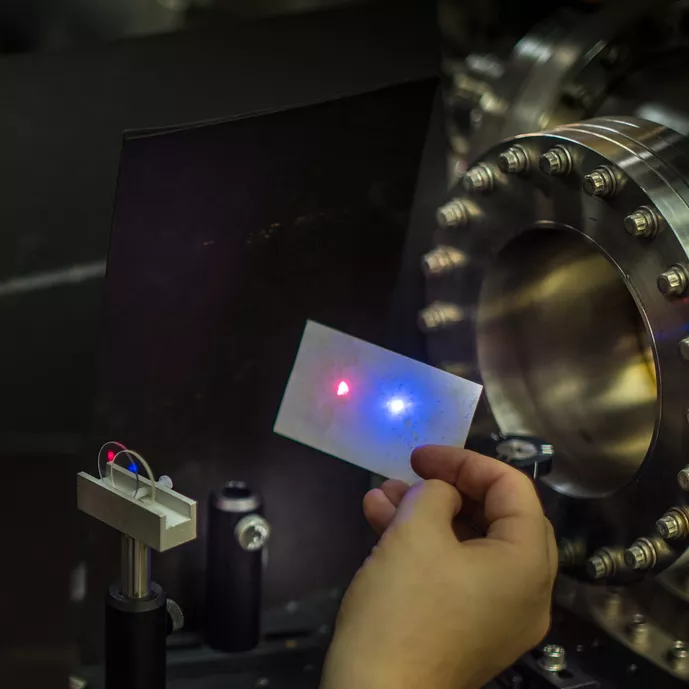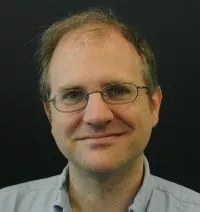Past Colloquia
Spring 2023
February 6th- Physics Colloquium with Eleni Katifori, PhD-"The architect and the tinkerer: design and optimization of biological flow networks"
March 20th- Physics Colloquium with Mel Abler, PhD- "Laboratory Study of Residual Energy Generation in Strong Alfvén Wave Interactions"
Fall 2022
October 3rd: Physics Colloquium with Dillion Fox, Phd- "Quantum computing in Pharma". Dorothy Vernon Room, New Dorm. Dinner at 5 PM, with talk to follow.
November 7th: Physics Colloquium with Gautam Reddy- "Modeling Goal-Oriented Animal Behavior". Dorothy Vernon Room, New Dorm. Dinner at 5 PM, with talk to follow.
Spring 2022
2/17: Robert Fisher, University of Massachusetts Dartmouth; "The Thermonuclear Explosions of White Dwarfs and the Stars Which They Formed From"
Spring 2021
3/4: Abby Vieregg, University of Chicago; "Discovering the Highest Energy Neutrinos With Radio Phased Arrays"
4/1: Sarah Loebman, University of California MERCED; "Understanding Our Home: Simulating the Evolving Milky Way"
4/15: Special Colloquium: Bryn Mawr Class of 1902 Lecture with Jami Valentine; "Resilience: Succeeding in Physics and STEM During Difficult Times"
Fall 2021
10/27: Brittany Kamai, PhD ; "Gravitational Wave Detectors, Strain curves, cosmology, seismic metamaterials"
Fall 2019
10/7 Colloquium: Dr. Treena Arinzeh; "Functional Biomaterials for Tissue Regeneration"
10/28 Colloquium: Dr. Charles Kane; "The Emergence of Topological Quantum Matter"
11/11 Colloquium: Dr. Heather Lewandowski "Watching Chemical Reactions Happen One Molecule at a Time "
Fall 2017
Mary Lyon, Class of 2006
Postdoctoral Associate
Stony Brook University
What do white dwarf stars, thermonuclear fusion, and ultracold plasmas have in common?
Spring 2017
March 29
Bridget Falck
Postdoctoral Fellow
University of Oslo
Institute of Theoretical Astrophysics
Simulating the Universe
In the past few decades, simulations of the large scale structure of the universe have played a key role in cosmology, addressing questions from galaxy formation to the nature of dark matter and dark energy. Simulations are required to calculate theoretical predictions of cosmological models in the nonlinear regime of gravitational collapse, and they have become an invaluable tool for developing and calibrating analysis methods for galaxy surveys. After giving an overview of how to simulate the universe, I will discuss how we can use simulations to study the formation of the cosmic web and develop tests of gravity.
Fall 2016
Sept. 23-24
Professor Naomi Halas '80 '84 '86 (By Invitation of the President)
Rice University
Nanophotonics
Public Talk: Solar steam generation and applications
We recently discovered that illuminating a solution of broadly absorbing nanoparticles dispersed in water results in vapor generation without the requirement of heating the fluid volume. Using sunlight, approximately 80% of the energy absorbed by the nanoparticle solution is directly converted to steam generation, with only 20% resulting in heating of the liquid. To understand this unusual property we need to examine the intimate connection between the optical properties and the heat transfer properties of nanoparticle-laden liquids, a regime not previously
investigated. Comparing single nanoparticle light-induced heating measurements with studies of light-induced steam generation in solutions of nanoparticles, we observe the importance of collective optical effects-multiple light scattering by absorber-scatterer nanoparticles in this phenomenon. In addition to steam generation, when nanoparticles are dispersed within a mixture of liquids and then illuminated, the properties of the distillate can diverge dramatically from those observed for standard distillation with thermal sources. In this case, the local nanoscale heat transfer from illuminated nanoparticles to the surrounding liquid can selectively perturb the hydrogen bonding network of simple liquids. These light-generated steam processes have direct applications in solar energy harvesting, where the goal is to produce steam directly for a variety of off-grid applications, well-suited to needs in both the developed and the developing world.
Physics Talk: Plasmonics: from noble metals to sustainability
Metallic nanoparticles, used since antiquity to impart intense and vibrant color into materials, have more recently become a central tool in the nanoscale manipulation of light. This interest has led to a virtual explosion of new types of metal-based nanoparticles and nanostructures of various shapes and compositions, and has given rise to new strategies to harvest, control, and manipulate light based on metallic nanostructures and their properties. As one begins to assemble metallic nanoparticles into useful building blocks, a striking parallel between the plasmons -- the collective electronic oscillations -- of these structures and wave functions of simple quantum systems is universally observed. Clusters of metallic nanoparticles behave like coupled oscillators, introducing effects characteristic of systems as diverse as radio frequency transmitters and coupled pendulums into light-driven nanoscale structures. Plasmons decay by producing hot electrons, a property appearing to be highly useful in applications ranging from photodetection to photocatalysis. While our scientific foundation for the field of Plasmonics has been built on nanoparticles consisting of noble and coinage metals, more recently we have begun to question whether the same, or similar, plasmonic properties can also be realized in more sustainable materials. Aluminum, the most abundant metal on our planet, can support high-quality plasmonic properties across the visible region of the spectrum, enabling practical large-area and cost-effective plasmonic applications such as flat-panel displays and robust colorimetric sensors. Graphene is an outstanding active plasmonic material, however, it can be tuned from the infrared into the visible region of the spectrum only by miniaturization to the true molecular limit.
Oct. 3
Professor Anne White
Massachusetts Institute of Technology
Nuclear Fusion and Plasma Science
Nuclear fusion: Energy technology development with tantalizing potential to completely redefine the world’s energy supply system
Bringing the stars down to earth is one of the great scientific challenges of the 21st century. The controlled fusion of isotopes hydrogen into helium represents an essentially inexhaust-‐ ible source of energy for society and remarkable progress has been made in attaining that goal by building new understanding of the still mysterious conditions inside the tokamak, the experimental test bed where fusion reactions occur at temperatures exceeding 100 million degrees. The ITER tokamak, currently under construction in France, is designed to deliver 500 megawatts of output from 50 megawatts of input power for several minutes at a time. Success would open the door to a large-‐scale source of continuous power with no carbon emissions or hazardous waste problems, and fuel that could largely be extracted from ordinary seawater. Work on existing tokamaks is largely focused on the grand chal-‐ lenges of fusion: the need to contain an ongoing fusion reaction, create a stable "burning plasma" that can maintain its own temperature, and capture its massive heat output for electric power generation. Containing a stable plasma at high temperatures is a challenge because the fusion plasma supports many waves and instabilities, some leading to turbulence, which very effectively redistributes heat and particles in the plasma, inhibiting attainment of parameters needed to achieve a burning plasma. Advanced simulations are being used to make predictions about turbulence parameters, the predictions are being compared to results from newly developed plasma turbulence diagnostics, and models of plasma confinement and performance are being developed that steer the experimental optimization of plasma confinement and control. This talk will introduce basic plasma physics behind fusion energy development, discuss science and technologies of the leading fusion plasma confinement device, the tokamak, and will describe recent advances in understanding turbulent transport from MIT’s Alcator C-‐Mod tokamak.
Nov. 7
Dr. Meltem Izzetoglu
Drexel University
Functional Optical Brain Monitoring
Functional Optical Brain Monitoring: Principles and Applications
Functional near-infrared spectroscopy (fNIRs) is an emerging neuroimaging technology that holds untapped potential for clinical use and research applications that require ecological validity and/or economical imaging. fNIRs uses near-infrared light to assess changes in blood oxygenation in the cortex. The technology allows the design of safe, portable, wearable, noninvasive, and inexpensive neuro-monitoring systems with rapid application times and near-zero run time costs. In the past two decades, brain activation studies employing fNIRs have been conducted on the visual, somatosensory, auditory, and language systems, and during motor and various cognitive tasks for the assessment of normative brain function, as well as for the understanding of the neural underpinnings of various neurological and psychiatric disorders. In general, these studies have reported localized increases in oxygenation in response to functional challenge, and the results have largely been in agreement with corollary functional magnetic resonance imaging (fMRI) and electroencephalography (EEG) studies. This talk will describe the basic principles underlying fNIRs, its unique characteristics with specific applications in basic neuroscience, in the field studies and clinical evaluations.
Spring 2016
Dr. Jedidah Isler, Vanderbilt University
Blazing Quasars and Blazing Trails: A Journey of Discovery
This talk blends cutting edge scientific research with personal storytelling to explore Dr. Isler's lifelong journey
of discovery. Dr. Isler will talk about her awardwinning research on blazars supermassive,hyperactive black holes that reside at the centers of massive galaxies. She will discuss how the celestial orientation of blazars and
the powerful relativistic jets that emanate from their black holes are helping us understand some of Nature’s most powerful particle accelerators. Dr. Isler will also address her experiences as a trailblazer in her field, offering an encouraging and practical set of strategies for students currently in the midst of their own educational journeys. Building upon her passions for both science and promoting the empowerment of underrepresented groups in STEM fields, Dr. Isler will share her stories and observations of what it means to see the world around us without limits.
Fall 2015
Prof. Kathryne Daniel '99 '02, Swarthmore College
Mixed or Blurred: How Spiral Galaxies Rearrange Themselves
The evolution of galaxies is observationally established, but the underlying processes and their relative importance are being actively explored. Environmental factors play an important role in the evolutionary process, but even in isolation the orbital angular momentum distribution of spiral disks is rearranged as stars interact with inhomogeneities in the disk. It has long been known that stellar populations are kinematically heated over time, causing a blurring effect between populations of stars. In the last decade a process known as radial mixing, whereby disk stars rearrange themselves with no associated kinematic heating, has been recognized as potentially important. Should radial mixing be an efficient process, it would have a significant impact on the structure, chemistry and kinematics of a spiral galaxy. Nonetheless, the physics that drives the efficiency of radial mixing is poorly understood. In this talk, I discuss the physical parameters that determine whether or not an individual star is a candidate for radial mixing. I then use these results to predict the fraction of stars that are subject to radial mixing and demonstrate that this fraction is smaller than previously thought, thus placing a strong constraint on the impact of radial mixing on the overall evolution of spiral galaxies.
Spring 2015
Fall 2014
Prof. William Phillips, University of Maryland, 1997 Physics Nobel Prize Winner
Spinning atoms with light: a new twist on manipulating atoms with light
Physicists have used light and its polarization to elucidate the internal state of atoms since the 19th century. Early in the 20th century, the momentum of light was used to manipulate the center-of-mass motion of atoms. The latter part of the 20th century brought optical pumping, coherent laser excitation, and laser cooling and trapping as tools to affect both the internal and external states of atoms. Bose-Einstein condensation created atomic samples having laser-like deBroglie-wave coherence, and atom optics techniques like Bragg diffraction provided coherent mirrors and beamsplitters for the coherent atoms. Recently, an extension of Bragg diffraction, using light beams with orbital angular momentum (angular momentum associated not with the optical polarization, but with the shape of the spatial mode), provided a new tool for coherent manipulation of atomic motion, creating coherent rotation of atom clouds, and persistent flow of superfluid atoms in toroidal traps. In the latest experiments, we have introduced an optical weak-link into the superfluid flow, allowing us to explore the behavior of an atomtronics circuit with an interesting circuit element.
Quantum Information: a scientific and technological revolution for the 21st century
Two of the great scientific and technical revolutions of the 20th century were the discovery of the quantum nature of the submicroscopic world, and the advent of information science and engineering. Both of these have had a profound effect not only on our daily lives but on our worldview. Now, at the beginning of the 21st century, we see a marriage of quantum mechanics and information science in a new revolution: quantum information. Quantum computation and quantum communication are two aspects of this revolution. The first is highly speculative: a new paradigm more different from today’s digital computers than those computers are from the ancient abacus. The second is already a reality, providing information transmission whose security is guaranteed by the laws of physics.
Prof. Tabbetha Dobbins, Rowan University
New Possibilities for Understanding Complex Metal Hydrides via Synchrotron X-ray Studies: Making Synchrotron X-ray Characterization relevant to the Hydrogen Economy
Spring 2014
Chris Chyba, Princeton University
Where We Stand with the Asteroid Impact Threat
An asteroid exploded over Chelyabinsk, Russia in February 2013 with the energy of a large nuclear warhead, injuring over a thousand people. In 1908, above the Tunguska river in Siberia, an even larger asteroid exploded and flattened 800 square miles of forest. How often do asteroids or comets collide with Earth? Why do some explode in the atmosphere and some crater the surface? How big a threat do these pose to our civilization? And finally, what can we do about it, what are we doing about it, and what should we do about it?
Jennifer Strabley, Honeywell Aerospace
Industrial Physics: Miniature Atomic Clocks and Careers in Industry
A career in industry is often the path less traveled. One reason is that it is hard to get information about what a career in industry is really like: What types of projects are done? What is day-to-day life like? What skills are needed? In this hour I will give you a flavor for a project that you might work on as an industrial physicist and will provide my viewpoints on a career in industry. I will present a brief overview on progress towards developing Miniature Atomic clocks – primary frequency standards with substantial reduction in size, weight, and power over the state-of-the-art. Our clock is based on a microwave transition in Rubidium-87. Unique to this effort, our focus is on special design considerations and engineering trades to realize a primary frequency standard in an ultimate miniaturized form factor, and compatible with a high volume, robust manufacturing process. Key to size reduction is the use of laser-cooled atoms to achieve narrow linewidths in a small size, and the ability to perform all the clock functions: sample preparation, spectroscopy, and read-out, in one physical location with a single laser source. Applications, technology background, project progress and future goals will be discussed. I will also share my experiences as a physicist who has chosen a career in industry. Please bring your questions!
Prof. Richard Ellis, Caltech
Let there be Light: The Quest for the First Galaxies
Gretchen Campbell, Joint Quantum Institute, NIST, and the University of Maryland
Superfluid Atom Circuits
Persistent currents are a hallmark of both superfluidity and superconductivity. Just as a current in a superconducting circuit will flow forever, if a current is created in a superfluid Bose-Einstein condensate, the flow will not decay as long as the current is below a critical value. Using a ring-shaped Bose-Einstein Condensate we have created a superfluid “atom circuit” that supports long-lived persistent currents. A laser beam is used as a barrier across one side of the torus to create a tunable “weak link” in the condensate circuit and can be used to control the current around the loop. By rotating the weak link at low rotation rates, we have observed phase slips between well-defined, quantized, current states, and have demonstrated that the system exhibits hysteresis. This behavior is analogous to that of a weak link in a superconducting loop. In electronic circuits, hysteresis plays in important role, particularly in applications like memory and digital noise filters, it's possible in future "atomtronic" circuits, our device could possibly play a similar role.
Fall 2013
Stephen Avery, University of Pennsylvania
Proton Therapy at the University of Pennsylvania: Clinic, Research and Education
Dr. Lidija Sekaric, DOE Sunshot Initiative
The SunShot Initiative

Contact Us
Department of Physics
Park Science Building
Bryn Mawr College
101 N. Merion Avenue
Bryn Mawr, PA 19010-2899
Phone: 610-526-5358


